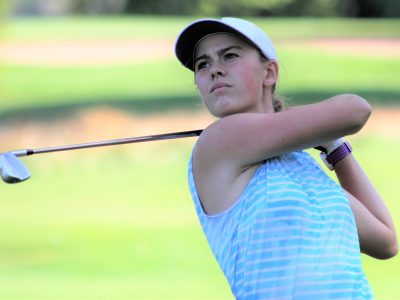By Shawn Allen
Note: This story first appeared in the daily online golf source, Morning Read, on August 12
This has been anything but a typical year in golf in 2020. Not just on the professional Tours. The junior-golf season has been turned inside out, as well.
Around the country, young golfers got a late start on their events and are starting the new school year amid the uncertainty of the global coronavirus pandemic. Golf is a safer sport to play than contact sports, but the question is begged: What is the goal of pushing juniors into competition so early? The answer reveals a pernicious side to the junior game.
At an amateur tournament that I covered late last year for another digital publication, I was working on my story after the first round when I heard a junior golfer in a yelling match over the phone, apparently with his father. In what was a nearly vacant locker room, the golfer shrieked, “I don’t know, Dad!” over and over as he undoubtedly was being questioned about play that “Dad” must have viewed as substandard.
It was heart-breaking but – also all too common. At the same event, a parent had to be escorted off the course after having become unruly with a tournament official. Another parent called the USGA to report the tournament over what the parent believed was an unfair ruling.
It’s natural for parents to want their children to succeed, but there comes a point when ‘helping’ does more harm than good.
Overbearing parents are a trope of youth athletics. If it feels as if such incidents are more common than in the past, that’s because they are. There is more access to organized youth athletics than ever. Instead of local sports such as school-sponsored teams, Little League baseball, pee-wee football, or junior golf tournaments run by the local club, there is an entire mechanism for children to travel the nation to compete against players of similar age and/or skills. Think Amateur Athletic Union or American Junior Golf Association, which boast memberships of 700,000 and 7,300, respectively.
Increased competition means a rise in the number of golfers, parents, coaches, and tournaments. It also means the increase in businesses that develop coaches. In a Wall Street Journal article from 2015, “Work & Family” columnist Sue Shellenbarger cited four national organizations, from California to Florida, that exist to study and improve youth sports. The consensus is that unnecessary competitive pressure on children, specifically by their parents, results in burnout, poor social development, and long-term physical maladies.
This is consistent with the findings by sports-training adviser Denise K. Wood, who states in her book “Sports Psychology Special Topics” that one-third of children younger than 10 who are placed into adult-structured competitive environments – as opposed to free play and competition chosen by the child – will burn out or dislike the sport by age 17.
Additionally, when children are asked to specialize in a sport that they didn’t choose, or one that they did choose but is parent-driven, they will over–train their bodies in a sport-specific way, overusing muscles and joints while failing to develop physical abilities that an array of physical activity would allow.
Any responsible parent would want to put his or her child in the best-case scenario, though it can be difficult to recognize that the ideal situation for the youngster might not be dictated by the adult. The goal shouldn’t always be to win, Shellenbarger cautions, but rather to form the soft qualities that are essential to being a well-adjusted adult: bonding with teammates, taking coaching well, and stretching physical limits. She cites Jim Thompson, the founder of the nonprofit Positive Coaching Alliance, who said: “[Parents] are confused about what the goal is. The goal is to develop better athletes and better people.”
There is another goal, however, that is becoming increasingly virulent: admission to college, and the cost of that education. To put a finer point to it, I interviewed former Vanderbilt golfer Jordan Janico two years ago. I asked about the pressure of junior golf and his goals in high school. He said it was college, and if a parent could get at least a 50-percent scholarship to a school such as Vanderbilt, that represents a $100,000 return on investment over four years.
“It’s totally worth it,” he said.
But for most junior golfers, a scholarship of any type to a college or university is a rarity. So, the goal has to be questioned. And to quote former President John Adams, “Facts are stubborn things.” We have scientific evidence about how to train children in athletics. And we know the negative consequences if we don’t abide by them.
It’s best to introduce activities to children, let them find a place to play, and encourage their soft skills: be tough, be patient, be kind. The competitive nature in children doesn’t have be stoked by parents.
Otherwise, we will continue to see incidents like the one that an editor friend of mine experienced. He played in a team event with a junior golfer who was ranked at the top of her age group. He asked her what the goal was. According to him, she said cynically: “Eighteen. Then I can get into college and not have to play golf again.”
Shawn Allen is a former teacher and track coach who loves the mechanics of golf. He has contributed to The Golfer’s Journal, SBNation, and Sports Illustrated. He lives in Nashville, Tenn. You can follow him on Twitter @ShawnerAllen










